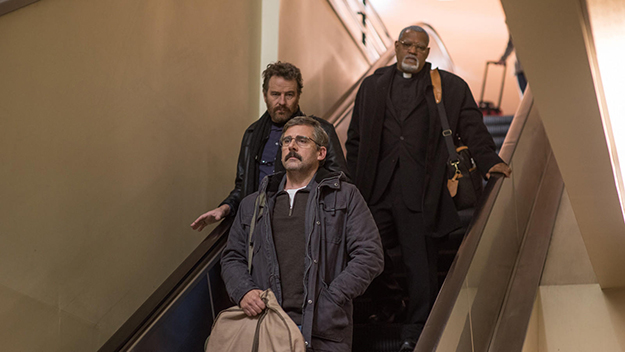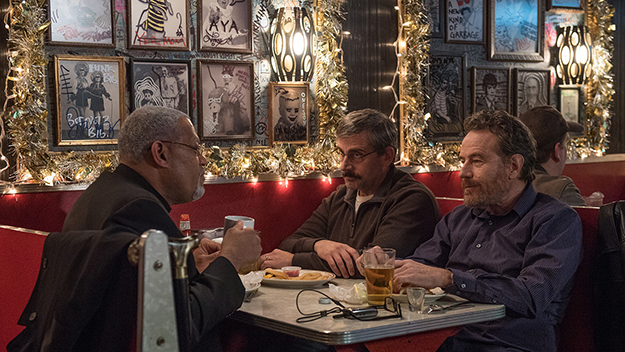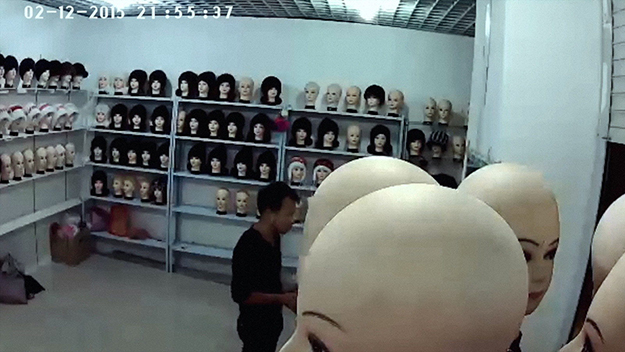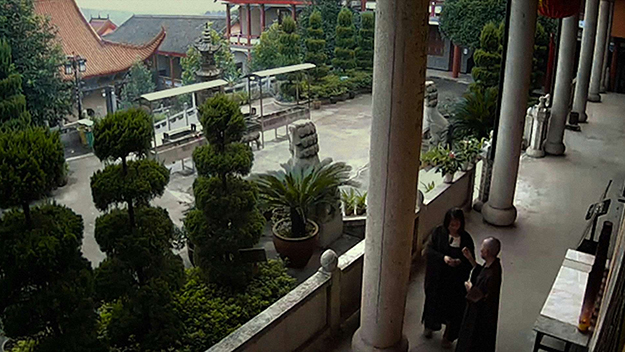NYFF Voices: Last Flag Flying + Dragonfly Eyes
Last Flag Flying (Darryl Ponicsan)
After his agent suggested he write a sequel to his 1970 novel, The Last Detail, Darryl Ponicsan speculated on where he might find his trio of Navy vets in the early Bush era. The result, his 2003 novel Last Flag Flying, bears an oblique connection to the Robert Towne/Hal Ashby version of The Last Detail.
“Otis Young, who played Mulhall in the original, left films to become a preacher, and then he died young,” Ponicsan, 79, said in an interview after Richard Linklater’s adaptation of the book had its world premiere at the New York Film Festival. “It’s kind of an homage to take what he did [for the story]. I thought, somehow that makes sense for a guy who’s had a long military career—alcoholism, God knows what else. A real sinner who’s found God.”
His characters’ real-world counterparts had another unexpected effect on Last Flag Flying: soon after teaming with Linklater to adapt the novel into a feature screenplay, he learned that Jack Nicholson would not be able to reprise his role from the original film. Rather than a setback, Ponicsan viewed this as another opportunity to reframe the story: crucially, the film is not itself a sequel, but “an adaptation of a book that is a sequel.” Instead of three ex–Naval officers who met while escorting the youngest to the brig, Linklater’s Last Flag Flying (which comes to theaters on November 3) reunites three Vietnam veterans haunted by a new set of wartime experiences, sometime in 2003, early in the Iraq War.
Despite the body-swapping, the two narrative universes feel adjacent—since the new film preserves the novel’s narrative structure and verbatim stretches of dialogue, the new faces register as reincarnations of the original three archetypes, bar-hopping and Amtrak-ing through the same three Northeast Corridor cities they visited in The Last Detail. These visual echoes unify Ponicsan’s disparate characters under the same umbrella of sentiments, evoking their musings on the cyclical nature of history.
Since The Last Detail, Ponicsan has written a dozen more novels, one of which he adapted into a screenplay (Cinderella Liberty); meanwhile, his screenwriting credits branch out from military dramas into coming-of-age stories (Vision Quest), high-school dramas (School Ties, co-written by Dick Wolf), and political thrillers (Sydney Pollack’s Random Hearts).
“There’s got to be a sort of human redemption. That’s what draws me to material to write,” Ponicsan said. Though novels offer him more control over the finished product, he gravitates to screenwriting for its emphasis on dialogue to reveal character, citing the influence of his earliest moviegoing experiences: “I can remember as far back as Marty, which was such a breakthrough in its simplicity as a love story. I also go back to pictures like On the Waterfront and The Sweet Smell of Success—not necessarily gritty, but real.”
“I’m firmly planted in reality,” he said. “For better or for worse, that’s what I do.”—Chloe Lizotte
Dragonfly Eyes (Xu Bing)
Dragonfly Eyes marks the directorial debut of Chinese artist Xu Bing, who has composed his movie entirely out of preexisting surveillance footage. The film, which had its world premiere at Locarno and screened to sold-out shows in Projections at the New York Film Festival, weaves a fictional narrative that loosely links the people and places witnessed on screen. It’s a love story between Qing Ting, an aspirant nun who left the temple and worked at a dairy farm, and her colleague engineer Ke Fan. He would do anything for her, including losing his job and ending up in prison, but as time passes, the protagonist, separated from her boyfriend, undergoes plastic surgery and becomes an Internet celebrity. Ke Fan seeks to regain his loved one by borrowing her face and undergoing surgery himself. All of these incredible reinventions reflect a notion of fluid identity in Chinese society.
“The most traditional Chinese way of thinking is a bit like everyone is the same: I can become you and you can become me,” Xu Bing attempted to explain during an interview at Locarno in August. “So that is why Ke Fan wants to become the other, because he loves her so much.”
Xu Bing’s previous art entailed the repurposing of various objects and materials. In his 2011 installation Tobacco Project he arranged cigarettes in the shape of an immense tiger skin rug; in Book from the Sky, he applied the Chinese principles of calligraphy to invent an entire alphabet of meaningless characters that looked like precious and sacred writings—to question things we take for granted such as language. In Book from the Ground, Xu Bing made a book completely comprised of emoticons—and Dragonfly Eyes might be considered its filmic equivalent, in its wholesale use of CCTV.
“What interests me is the same: what is real and what is fake,” Xu Bing said. The artist toys with our perceptions by leaving mismatched time codes burnt on the images. The haphazard script evolved organically, rewritten to match the footage. “In every kind of art, all of the good things come from the limitations you encounter,” he added.
Like Qing Ting, who is constantly reminded of her average looks (at least until her surgery), Dragonfly Eyes resists judgment by classical aesthetic standards. The composition is at a certain level necessarily unplanned, and the quality of the image varies depending on the footage conditions. And in the overlaid narrative, the first-person point of view of Qing Ting alternates with Ke Fan’s, and ultimately with the robotic voice of the Dragonfly computer—an omniscient Big Brother expressed in voiceover. Some images support the story, others contribute to a feeling that reality is scarier than fiction.
It’s a world of images that suggests a completely fulfilled dystopia. Said Xu Bing, whose film will continue to make festival rounds: “Although it’s a feature film, the movie is like The Truman Show happening in real life.”—Andreea Patru











